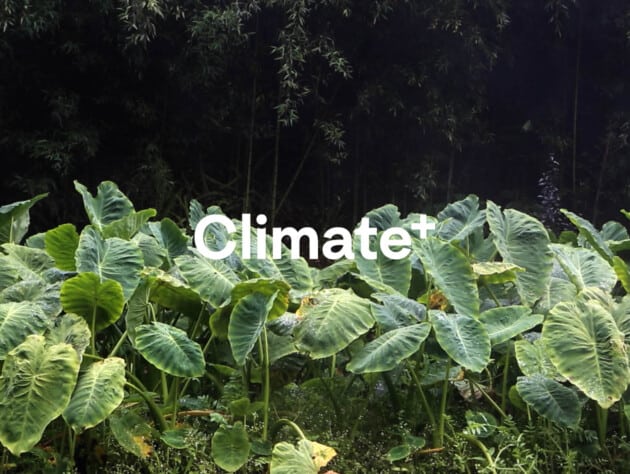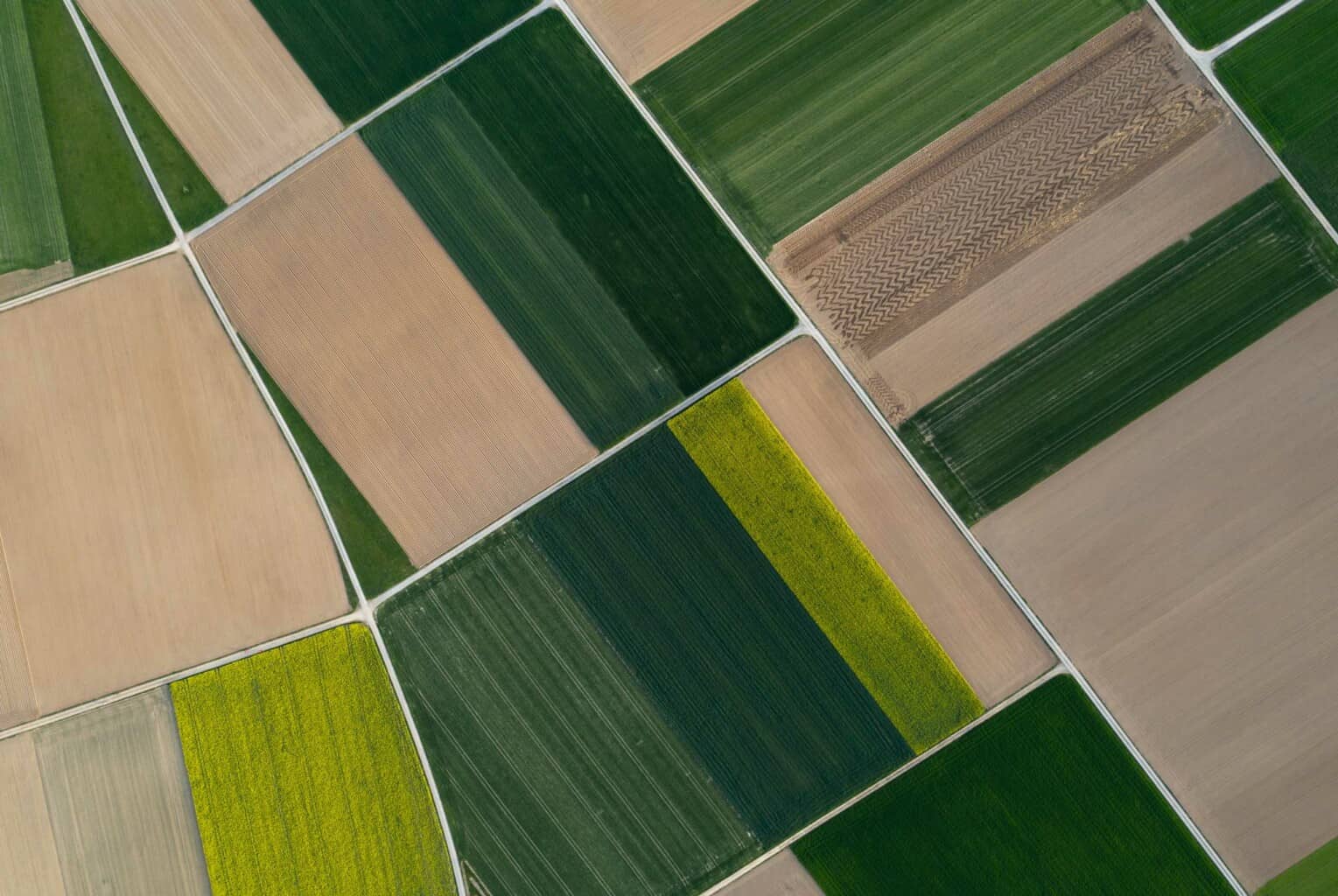Climate+ Vision
Climate+ guides the fashion, textile, and apparel industry towards a shared goal.
At the heart of our organizational strategy, Climate+, is the goal of guiding the industry towards reducing greenhouse gas (GHG) emissions from fiber and raw material production by 45% by 2030. This goal was developed to be in line with the Paris Agreement and keeping global warming to a 1.5°C pathway. But it doesn’t stop there. The way we lead the industry is unique in how it goes beyond accounting for greenhouse gas emissions to looking at sustainability holistically instead.
SCOPE
Climate+ considers the greenhouse gas impacts associated with raw material extraction and initial processing.
Most of the familiar materials in the fashion, textile, and apparel industry today come from farming, forests, or fossil fuels. These are three of the biggest focus areas in the challenge to limit global warming and mitigate the most serious impacts of climate change. We’re doing just that by making sure these fibers are produced in a way that supports our planet, its ecosystems, its landscapes, and its communities.

Explore
There are three key areas of impact–and opportunity.
The most important aspect of Climate+ is its interdisciplinary, interconnected approach. It does away with blanket solutions in favor of tailored, targeted strategies for three independent impact areas.
Soil
Soil puts food on our plates, sustains our farming systems, and is the beginning of all material production. We’re striving to keep it healthy.

Biodiversity
Like our food and the air we breathe, material production depends on healthy ecosystems which need a wide variety of animals, plants, and microorganisms. That’s why we’re supporting biodiversity.

Water
The basis of life as we know it, water needs to be treated as the precious resource it is. We work to make sure it is used responsibly and put back safely into our systems.

How it works
We have identified three key areas of action to reach this goal
Material substitution
We’re accelerating the adoption of organic, regenerative, recycled, and other more responsible materials. By establishing and providing global certifications and standards, as well as the means for brands across the industry to measure and manage how they source materials, we’re striving to make more responsible alternatives the accessible default—the rule, rather than the exception.

Closing the innovation gap
We’re promoting innovation and scaling solutions, from new business models and circular systems to emerging materials. Using increasingly sophisticated intelligence-gathering tools, we’re collecting richer data, and, through our industry reports, making it easier to share information about how we can scale existing solutions, such as regenerative agriculture and textile-to-textile recycling. We’re also bringing together leaders from around the world to contribute and combine their knowledge and expertise at our round tables, conferences, and other events.

Slowing growth
We’re championing slowing down, doing more with less, and producing with purpose. Our Climate+ vision works in harmony with the natural world, respecting the planet and protecting those who sustain it. To make this vision a reality, we’re taking a truly global and interconnected view as we guide our worldwide community towards a better future.

FAQ
Frequently asked questions about our Climate+ modeling
To achieve our 45% reduction goal, the industry needs to reduce its GHG emissions related to fiber and raw material extraction and initial processing to 180 – 190 MT CO2e by 2030. This is compared to the 2019 baseline, which Textile Exchange estimates as 335 MT CO2e. Here’s are the answers to some common questions about how we are keeping track of progress towards that target.
What year was the 45% GHG reduction goal set?
The goal has a baseline year of 2019, which means that the 45% emission reduction is based on the impacts calculated for 2019.
What data does Textile Exchange use to estimate the GHG impacts of different fibers and raw materials?
1. Global production volume data from Textile Exchange’s annual Materials Market Report (previously called the Preferred Fiber and Materials Market Report).
2. Sector split data aggregated by Textile Exchange, estimating the share of global production volume linked to the fashion, textile, and apparel industry versus other sectors, such as medical textiles and the automotive industry.
3. Global average GHG emission factors, sourced from Life Cycle Assessment studies on fibers and raw materials.
What are the limitations of the current LCA datasets?
LCA methodology, when applied to fibers and raw materials used by the fashion, textile, and apparel industry, currently has some key limitations. It does not capture all impact areas such as soil health, biodiversity, animal welfare, and social impacts; it can be cost-prohibitive and resource intensive; there can be significant variability across LCA studies in the scope of what is covered as well as in other assumptions that are made; system boundaries defined for LCA studies can vary within and across fiber types; and results from LCA studies can be presented in multiple ways (e.g., “global averages” or regional impacts). Finally, most of the LCA data collected is at the global level and thus is not a full representation of country or regional production. Read our LCA FAQ.
How is Textile Exchange working to fill data gaps across the industry?
The industry is currently lacking GHG emissions factors for a number of key fiber and raw materials. Textile Exchange is working on filling these gaps via several workstreams:
1. Leading baseline LCA studies for cashmere, cotton, polyester, nylon,and leather, along with several additional studies on materials certified to Textile Exchange standards (see below) and potential expansion to other fiber and material categories in the future. At a minimum, we are aiming for results at a country level for each study. Results will be made publicly available.
2. Developing a Life Cycle Inventory (LCI) Library to house the underlying input/output data from LCA studies for open-source access, enabling the industry to fill additional gaps more efficiently in representative GHG emission factors.
3. Hosting an Impact Measurement community space on the Textile Exchange Hub, our dedicated online member platform.
What is the scope of the GHG impact modeling conducted by Textile Exchange against the 45% target?
2022 was the first year Textile Exchange was able to isolate the production volumes and impacts related specifically to the fashion, textile, and apparel sector. Previous calculations included global production across all use cases, such as automotive and industrial sectors. We will continue to refine this sector-split methodology.
The GHG impact modeling against the 45% reduction target looks at climate impacts only (not including carbon removals), and does not include other impact areas such as biodiversity, soil health and, water.
The full list of included and excluded fibers and raw materials and the associated modeling approach, along with other details on the GHG impact reporting methodology, are all included in the GHG impact reporting methodology document. This can be found in the library of the Impact Measurement community on The Textile Exchange Hub.
How is this modeling intended to be interpreted?
Any modeling of industry-wide GHG impacts should be considered as a range and a guide to understand the potential impact, rather than absolute numbers. This is due to the uncertainty in the data, including the use of proxy data to represent the GHG impacts of certain fibers and raw materials which are currently lacking specifically representative data.
Textile Exchange’s GHG impact modeling calculations will be updated as the underlying datasets are improved – whether the production volume data, the sector split data, or the GHG emissions factors.
What is “LCA+” and how is it implemented?
“LCA+” is Textile Exchange’s approach to impact measurement that goes beyond solely addressing carbon emissions, also recognizing impacts related to biodiversity, soil health, water, animal welfare, and livelihoods. Textile Exchange is actively working with expert partner organizations that are developing methodologies and modeling approaches to capture industry progress in these other impact areas beyond climate.

Learn More
Track industry progress toward Climate+
The Climate+ Dashboard measures progress toward our Climate+ goals. .It looks at fiber and material production data against a 2019 baseline, and calculates the associated GHG emissions and water impacts. We refreshes our GHG impact modeling each year in line with the publication of the Materials Market Report.